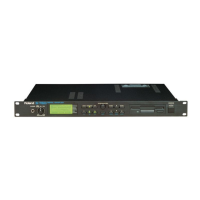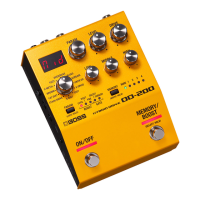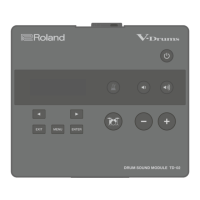50
Appendix
Reverb Time*
Chorus Parameters*
Chorus Type*
Modulation Rate*
Modulation Depth*
Feedback*
Reverb Send Level*
Controller Settings*
Channel Pressure*
Control Change*
Scale/Octave Tuning*
Keyboard Controllers*
Level*
Pan*
Reverb Send Level*
Chorus Send Level*
Active Sensing
■ Major types of MIDI message used by the SC-D70
MIDI uses various types of MIDI message to convey different types of performance
information. For example, information like “such-and-such a note was played, with
this much force” is transmitted as a note message.
The action that a device takes (such as how it produces sound) when it receives each
type of MIDI message will depend on the specifications of that device. This means
that if the receiving device does not have the function requested by the transmitted
message, the desired result will not occur.
The major types of MIDI message that can be received by the SC-D70 are described
below.
* Messages marked by a
✩
symbol are those for which reception is required by the GM System
(level 1).
Note Messages
✩
These messages convey keyboard operations. Note messages include the following
information:
Note number: a number assigned to each key
Note-on: transmitted when a key is pressed
Note-off: transmitted when a key is released
Velocity: a value expressing the speed at which the key was pressed
The note number is a value that expresses the location of the note on the keyboard in
the range of 0–127, with middle C (C4) as 60.
Pitch Bend Change
✩
These messages convey operations of the pitch bender lever (wheel) provided on
most synthesizers. This allows the pitch to be continuously varied.
Program Change
✩
This message is normally used to switch sounds. A program number from 1 to 128
is used to select the desired sound. The SC-D70 can use Program Changes to switch
sounds (instruments). By using Bank Select messages (a type of Control Change
message) in conjunction with Program Changes, you can select from an even wider
range of sounds (p. 34).

